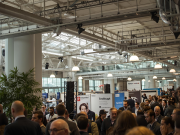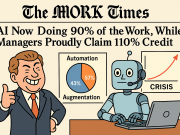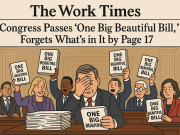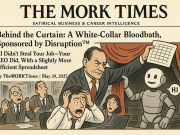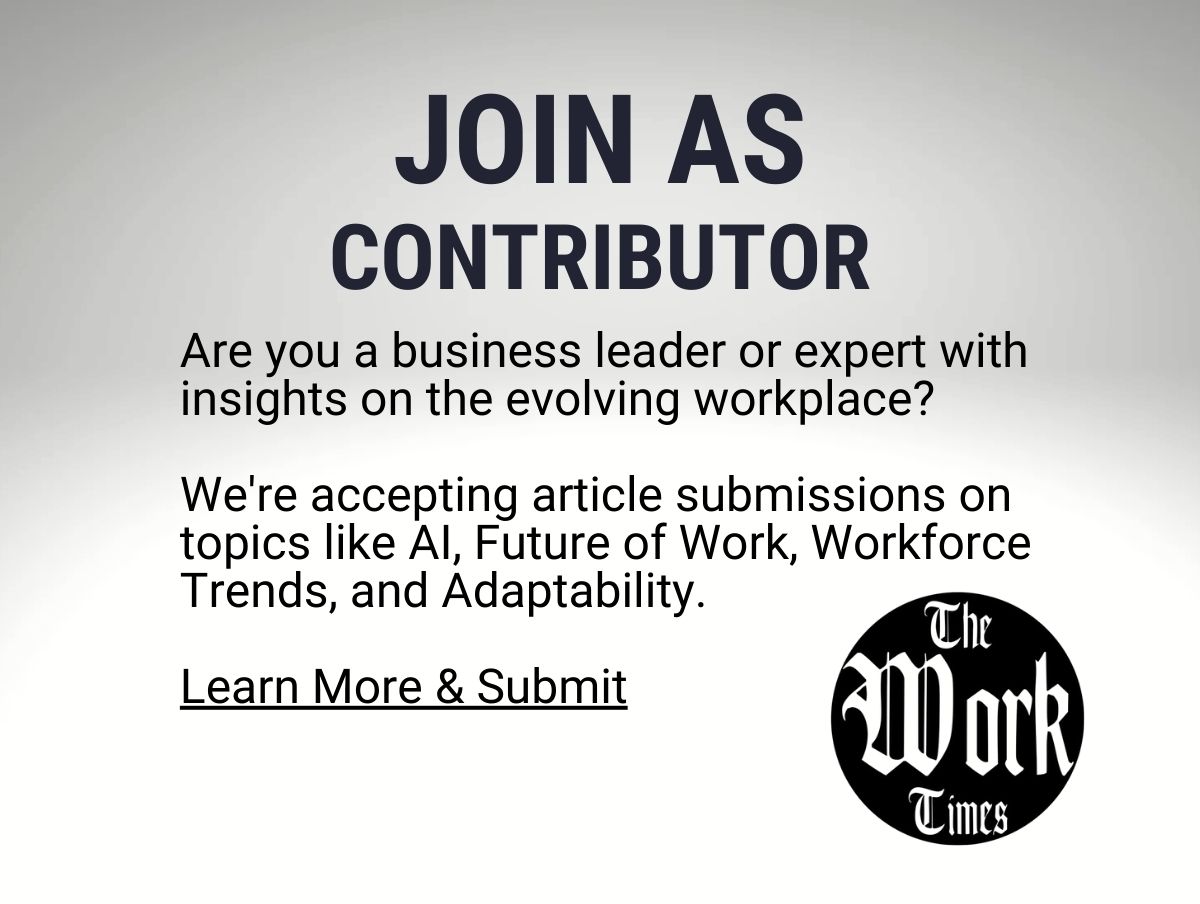Introduction: A Sudden Jolt to the Labor Market
In July, U.S. layoffs spiked by a staggering 140% compared to the previous month—the steepest surge since the pandemic-induced job losses of 2020. For policymakers, economists, and business leaders, the figure is more than just a statistical blip. It raises pressing questions about the structural health of the labor market, the evolving role of automation and AI in job displacement, and the adequacy of America’s safety nets in a time of accelerated economic change.
The timing is critical: this labor shock is emerging amid an otherwise stable unemployment rate, solid GDP growth, and continued job creation in certain sectors. That contradiction—rising layoffs alongside macroeconomic stability—suggests we’re witnessing sector-specific disruptions with systemic ripple effects.
Why the Numbers Matter
Layoff trends are often early warning signals of broader economic shifts. A 140% spike in a single month isn’t a gentle tremor—it’s a shockwave. Historical data from the Bureau of Labor Statistics (BLS) shows that when monthly layoff growth exceeds 100%, it often foreshadows:
- Sectoral contractions—particularly in industries sensitive to interest rate changes, consumer sentiment, or technological disruption.
- Confidence shocks—employers preemptively cutting staff in anticipation of slower demand.
- Restructuring waves—triggered by mergers, acquisitions, or automation rollouts.
The post-pandemic labor market has been marked by low unemployment and worker shortages in many fields. But July’s numbers suggest we may be entering a new phase—a “churn economy”—where the rate of worker displacement accelerates even as total employment remains high.
Breaking Down the Drivers
The 140% surge wasn’t evenly distributed across the economy. Several converging factors explain why layoffs spiked so dramatically.
1. Technology and Automation
Automation—particularly AI—is starting to move from back-office functions into revenue-generating roles. Large corporations in tech, finance, and media are announcing layoffs tied explicitly to AI adoption. These aren’t just cost-cutting moves; they’re strategic reorganizations aimed at reshaping workforce composition for long-term efficiency.
Example: Customer service roles replaced by AI-driven chatbots, or junior analyst positions replaced by machine learning models capable of processing vast datasets in real time.
2. Interest Rate Sensitivity
Sectors such as construction, manufacturing, and real estate—heavily reliant on financing—are under pressure from high interest rates. As borrowing costs remain elevated, projects stall, hiring slows, and redundancies rise.
3. Consumer Spending Shifts
Retail and hospitality saw a seasonal hiring slowdown. Inflation-adjusted spending power remains under strain, prompting employers to trim seasonal or temporary roles earlier than usual.
4. Corporate Over-Hiring
The hiring surge of 2021–2022, fueled by pandemic recovery and stimulus liquidity, led many companies to expand faster than sustainable. Some of July’s layoffs are simply “overcorrections” to return staffing to pre-pandemic baselines.
The Displacement Dilemma
While some argue that layoffs are a natural part of economic dynamism—freeing up workers to pursue better-aligned roles—rapid surges have human and systemic costs:
- Income volatility: Sudden job loss reduces household stability and curtails consumer spending, slowing economic momentum.
- Skill erosion: Workers in shrinking sectors risk falling behind in the digital skill race.
- Mental health strain: Repeated or unexpected layoffs erode trust in institutions and employers, contributing to burnout and disengagement.
Without targeted intervention, large-scale displacement risks widening inequality—especially for mid-career workers without access to retraining pathways.
A Historical Parallel: The “Rolling Recession” of the 1980s
The current layoff pattern bears resemblance to the early 1980s, when high interest rates and automation in manufacturing triggered industry-specific recessions without a full-blown national downturn. In that era:
- Manufacturing towns hollowed out as factories embraced robotics and offshoring.
- Service sector jobs expanded, but with lower wages and less stability.
- Worker mobility lagged—leading to persistent regional unemployment.
The lesson? Sector-targeted shocks can have long-lasting geographic and demographic consequences if not addressed with active labor market policies.
Policy Imperatives: A Five-Point Response
A think tank approach to this problem doesn’t stop at diagnosis—it points toward strategic, actionable solutions.
1. Rapid Reskilling Infrastructure
Layoff surges demand real-time retraining capacity. Traditional multi-year degree programs won’t work for displaced workers facing rent, mortgages, and family obligations.
- Expand short-term credential programs linked to high-demand sectors (clean energy, healthcare, AI-adjacent tech).
- Use public–private partnerships to fund tuition-free pathways for displaced workers.
2. Portable Benefits
Many laid-off workers lose not just income, but health insurance and retirement contributions. Creating portable benefits systems—tied to the worker, not the employer—would soften the blow and facilitate job mobility.
3. Layoff-to-Hire Matching Systems
Local workforce boards and state labor departments should implement “rapid re-employment exchanges”—matching displaced workers to employers with immediate openings, leveraging skills databases and AI matching algorithms.
4. Incentivizing Retention Through Upskilling
Instead of cutting jobs, employers could be incentivized through tax credits to upskill workers for new roles internally—especially in automation-heavy transitions.
5. Early Warning and Sector Monitoring
An expanded Labor Market Early Warning System—integrating BLS data, private payroll analytics, and industry reports—could allow policymakers to act before layoff spikes cascade into regional crises.
The Role of AI: Disruption or Opportunity?
AI’s influence on layoffs is double-edged. While it’s displacing certain job categories, it’s also creating demand for:
- Prompt engineers and data trainers
- AI ethicists and compliance officers
- Cybersecurity specialists
- Maintenance roles for AI infrastructure
The challenge is bridging the gap between the jobs being lost and those being created. This requires proactive policy—not reactive scrambling.
Business Responsibility in a Volatile Labor Market
From a corporate governance perspective, mass layoffs—especially in profitable companies—should be weighed against long-term reputational risks. The public is increasingly attuned to the optics of shareholder returns being prioritized over workforce stability. Forward-thinking companies can:
- Commit to layoff-minimization policies in exchange for talent retention tax incentives.
- Publicly report redeployment rates—the percentage of workers moved to new internal roles instead of being let go.
- Collaborate with local governments on transition funds for communities hit by job losses.
The Human Factor
Beneath the numbers are individuals whose livelihoods, family stability, and career trajectories are abruptly disrupted. A 140% layoff surge translates into tens of thousands of personal crises. This underscores the need for:
- Accessible mental health resources for laid-off workers.
- Community-based networking and mentorship programs to shorten job search timelines.
- Financial literacy training to help navigate severance packages, unemployment benefits, and career pivots.
Conclusion: Navigating the Churn Economy
The July layoff surge is not a sign of imminent economic collapse, but it is a signal flare. America’s labor market is entering a phase of accelerated churn, driven by technological adoption, structural realignments, and macroeconomic policy shifts.
The good news: with foresight, coordination, and innovation in workforce policy, these shocks can be managed—and even leveraged—to strengthen the economy. The bad news: without swift, targeted interventions, this surge could mark the beginning of a destabilizing trend where disruption outpaces adaptation.
For policymakers, the imperative is clear: treat July’s numbers not as an anomaly, but as a call to action—a chance to build the adaptive capacity the U.S. workforce will need in an age where change is the only constant.

